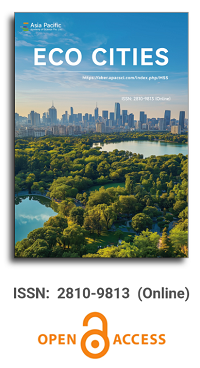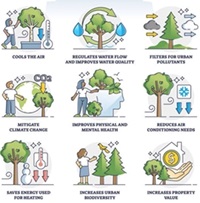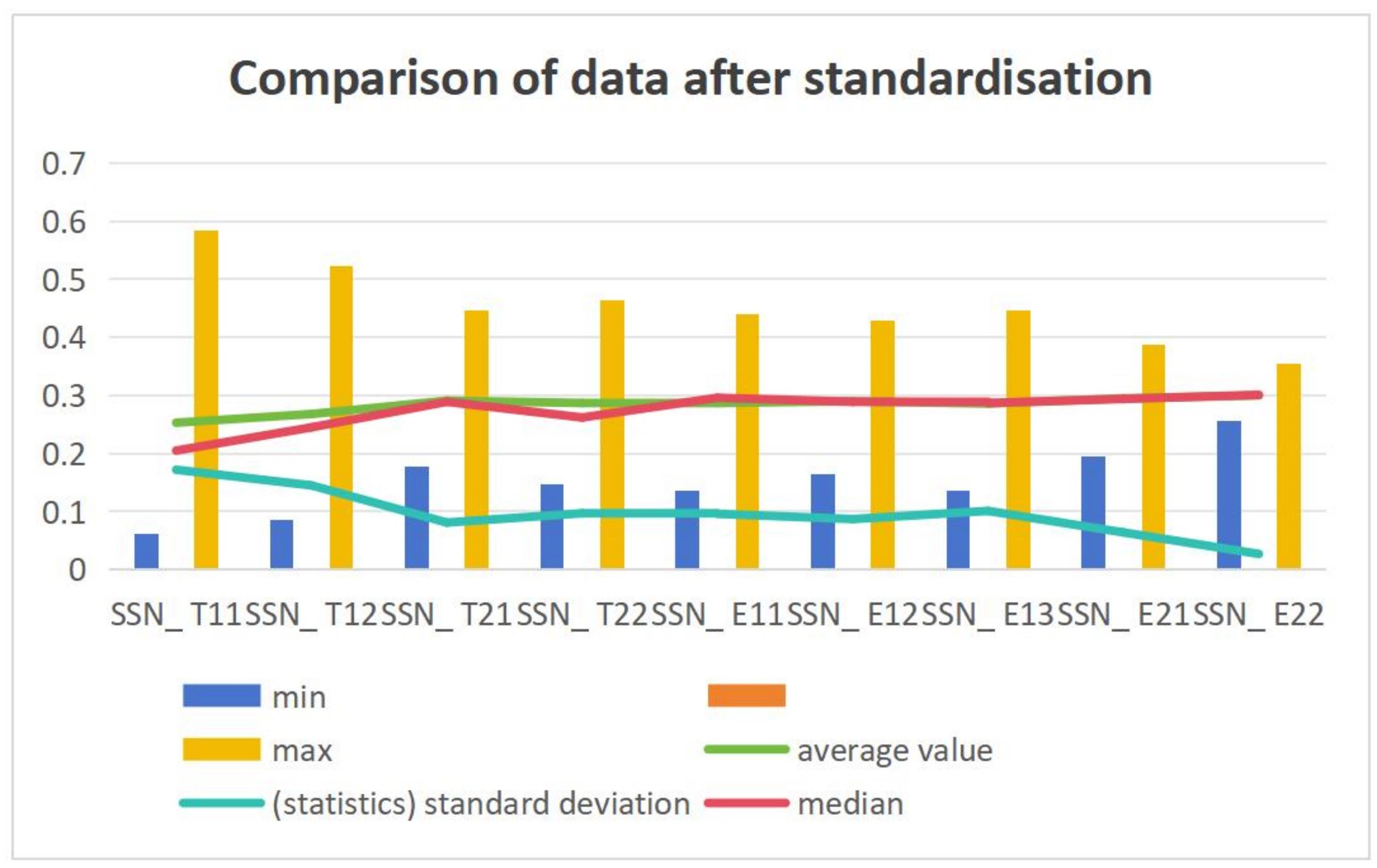


High carbon sink goals in the regeneration of waterfront industrial heritage
Vol 6, Issue 1, 2025
Download PDF
Abstract
In the context of high carbon sink targets, the regeneration of China’s waterfront industrial heritage faces both opportunities and challenges. This paper takes Hanggang Park as an example to study its transformation along the Grand Canal. In terms of planning strategy, the park redefines its functionality, including the reuse of construction equipment and multifunctional transformation of space, increasing green space and remediating polluted soil; in terms of transformation direction, the park is environmentally oriented, focusing on vegetation restoration, soil and water restoration and protection, using low-carbon materials for construction and restricting high-carbon emitting enterprises; and the government actively participates in the park by re-planning the site, incorporating top-level design, and managing the development and operation of the park. The successful transformation of Hangzhou Steel Park is a reference for other waterfront industrial heritage. In the future, we should continue to promote technological innovation, sustainable industrial planning, and strengthen public participation and financial investment, so as to realise a win-win situation for both environmental protection and urban renewal, and help achieve the goal of carbon sinks.
Keywords
References
- Han H. Optimisation Strategies and Selection Paths of Urban Industrial Space Transformation under the Goal of ‘Dual Carbon’ - Taking Industrial Heritage Protection and Renewal as a Perspective (Chinese). Journal of Shanghai Normal University (Philosophy and Social Science Edition). 2021; 50(06): 88-94. doi: 10.13852/J.CNKI.JSHNU.2021.06.010
- Korkou M, Tarigan AKM, Hanslin HM. The multifunctionality concept in urban green infrastructure planning: A systematic literature review. Urban Forestry & Urban Greening. 2023; 85: 127975. doi: 10.1016/j.ufug.2023.127975
- Yu H, Li Y, Lu L, et al. A review of research on the transformation and development of leisure tourism in traditional industrial areas in metropolitan cities (Chinese). Journal of Natural Resources. 2016; 31(3): 526-542. doi: 10.11849/zrzyxb.20150284
- Armstrong B. Industrial policy and local economic transformation: evidence from the US Rust Belt. Economic Development Quarterly. 2021; 35(3): 181-196.
- Walling D, Sadler R, Lafreniere D. Lessons from US rust belt cities for equitable low-growth futures. Urban Research & Practice. 2021; 14(4): 471-482.
- Kalafatis SE. Socioeconomic Reinvention and Expanding Engagement with Climate Change Policy in American Rust Belt Cities. Atmosphere. 2020; 11(12): 1327.
- Wilson D, Heil M. Decline machines and economic development: Rust belt cities and Flint, Michigan. Urban Geography. 2022; 43(2): 163-183.
- Kitheka BM, Baldwin ED, Powell RB. Grey to green: Tracing the path to environmental transformation and regeneration of a major industrial city. Cities. 2021; 108: 102987.
- Komninos N. Transformation of industry ecosystems in cities and regions: A generic pathway for smart and green transition. Sustainability. 2022; 14(15): 9694.
- Higgins P. From sustainable development to carbon control: urban transformation in Hong Kong and London. Journal of cleaner production. 2013; 50: 56-67.
- Bridge G, Gailing L. New energy spaces: Towards a geographical political economy of energy transition. Environment and Planning A: Economy and Space. 2020; 52(6): 1037-1050.
- Lawrence HW. The greening of the squares of London: transformation of urban landscapes and ideals. Annals of the association of American geographers. 1993; 83(1): 90-118.
- Chen F, Wang X. Ecological garden construction from the perspective of plant community science--Taking Baosteel as an example (Chinese). Chinese Garden. 2000; 16(5): 35-37.
- Zhang Y, Yang M, Li Z, et al. Study on the Spatial Distribution Characteristics and Influencing Factors in the Reuse of National Industrial Heritage Sites in China. Sustainability. 2023; 15(24): 16685. doi: 10.3390/su152416685
- Tang C, Zha J, Zhang J, et al. The goal of China’s tourism industry carbon peak and neutrality(dual-carbon) in the context of high-quality development: Evaluation and prediction, majorchallenges, and approach (Chinese). Journal of Chinese Ecotourism. 2021; 11(4): 471-497.
- Li H, Zhou L. The role of the tourism industry in achieving dual carbon goa!. Tourism Tribune. 2023; 38(11): 3-5.
- Xu C, Wang B, Chen J. Forest carbon sink in China: Linked drivers and long short-term memory network-based prediction. Journal of Cleaner Production. 2022; 359: 132085.
- Lyu X, Li X, Wang K, et al. Strengthening grassland carbon source and sink management to enhance its contribution to regional carbon neutrality. Ecological Indicator. 2023; 152: 110341.
- Shi T, Wang D, Tang Y, et al. Research progress on calculation method and impact factors of carbon sequestration capacity in urban ecosystems. Chinese Journal of Applied Ecology. 2023; 34(2): 555-565.
- Wang L, Liu Y, Zhang Y, et al. Spatial and temporal distribution of carbon source/sink and decomposition of influencing factors in farmland ecosystem in Henan province. Acta Scientiae Circumstantiae. 2022; 42(12): 410-422.
- Yang L, Hao X, Shen C, et al. Assessment of carbon sink capacity and potential of marine fisheries in China under the carbon neutrality target. Resources Science. 2022; 44(4): 716-729.
- Wang Y, Zhu R, Liu J, et al. Research on the industrial heritage community retrofitting design based on space network model of carbon. Buildings. 2023; 13(9): 2202. doi: 10.3390/buildings13092202
- Wang L, Zhu H, Ye Y, et al. Spatio-temporal differentiation and simulation of provincial tourism carbon neutrality in China. Acta Ecologica Sinica. 2024; 44(2): 625-636.
- Sharma T, Xu Y. Domestic and international CO2 source-sink matching for decarbonizing India’s electricity . Resources, Conservation and Recycling. 2021; 174: 105824. doi: 10.1016/j.resconrec.2021.105824
- Han SH, Zhang H. Progress and prospects in industrial heritage reconstruction and reuse research during the past five years: Review and outlook. Land. 2022; 11(12): 2119. doi: 10.3390/land11122119
- Della Spina L. Adaptive sustainable reuse for cultural heritage: A multiple criteria decision aiding approach supporting urban development processes. Sustainability. 2020; 12(4): 1363. doi: 10.3390/su12041363
- Yin S, Gong Z, Gu L, et al. Driving forces of the efficiency of forest carbon sequestration production: Spatial panel data from the national forest inventory in China. Journal of Cleaner Production. 2022; 330: 129776. doi: 10.1016/j.jclepro.2021.129776
- Li Q, Chen H, Sharma S, et al. Optimization countermeasures for high-quality development of green economy driven by environmental regulations, carbon emission reductions, and efficiency enhancements. Stochastic Environmental Research and Risk Assessment. 2024; 38: 4169-4191. doi: 10.1007/s00477-024-02696-1
- Qian Z. Heritage conservation as a territorialised urban strategy: conservative reuse of socialist industrial heritage in China. International Journal of Heritage Studies. 2023; 29(1-2): 63-80. doi: 10.1080/13527258.2023.2169954
- Ottaviani D, Demiröz M, Szemző H, et al. Adapting methods and tools for participatory heritage-based tourism planning to embrace the four pillars of sustainability. Sustainability. 2023; 15(6): 4741. doi: 10.3390/su15064741
- Alavi P, Sobouti H, Shahbazi M. Adaptive re-use of industrial heritage and its role in achieving local sustainability. International Journal of Building Pathology and Adaptation. 2024; 42(6): 1223-1249.
- Li Z. Environmental benefits of Hangzhou Iron and Steel Plant after the implementation of technological reform plan. Zhejiang Economy. 1989; 6: 42-43.
- Zhao Q, Wang T, Gao W, et al. The synergistic decarbonization potential from construction industry and upstream sectors with a city-scale: A case study of hangzhou, China. Journal of Cleaner Production. 2024; 460: 142572. doi: 10.1016/j.jclepro.2024.142572
Supporting Agencies
Copyright (c) 2025 Author(s)
License URL: https://creativecommons.org/licenses/by/4.0/

This site is licensed under a Creative Commons Attribution 4.0 International License (CC BY 4.0).

Chinese Academy of Sciences, China
Indexing & Archiving
Asia Pacific Academy of Science Pte. Ltd. (APACSCI) specializes in international journal publishing. APACSCI adopts the open access publishing model and provides an important communication bridge for academic groups whose interest fields include engineering, technology, medicine, computer, mathematics, agriculture and forestry, and environment.



.jpg)

.jpg)



